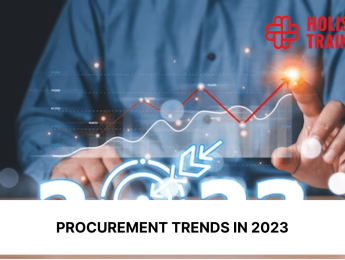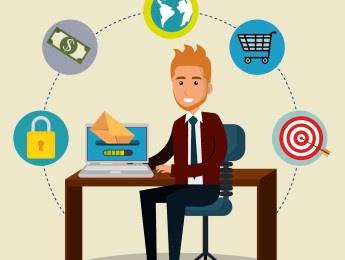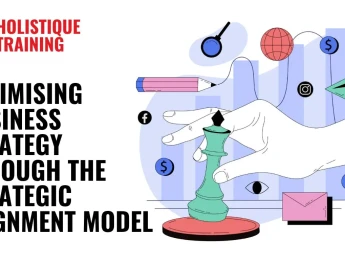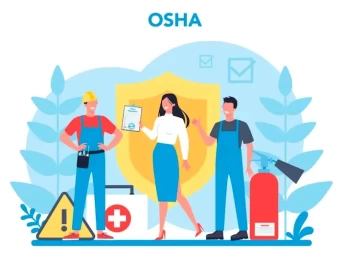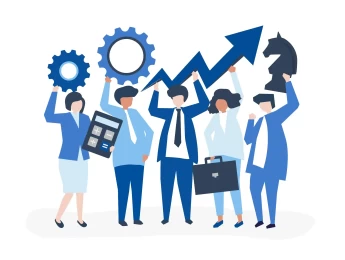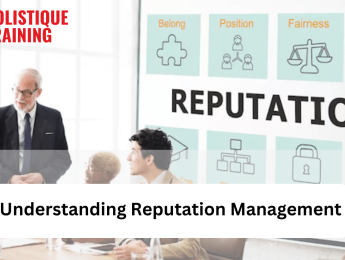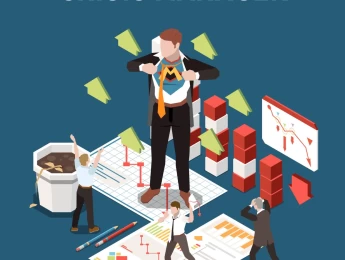- Table of Contents
- Advantages of Constantly Following Procurement Trends
- Competitive Edge
- Cost Savings
- Supplier Relationships
- Risk Mitigation
- Innovation
- Regulatory Compliance
- Strategic Alignment
- 10 Most Important Trends in Procurement in 2023
- 1. Digital Procurement Transformation
- 2. Data-Driven Decision-making
- 3. Supplier Collaboration Platforms
- 4. Sustainable Procurement
- 5. E-Procurement and E-Sourcing
- 6. Agile Procurement
- 7. Supplier Diversity
- 8. Blockchain for Transparency
- 9. Risk Management and Resilience
- 10. Personalised Procurement Experiences
- What Does the Future of Procurement Look Like?
- End-to-End Automation
- Hyper-Personalisation
- Cognitive Procurement
- Blockchain Integration
- Eco-Procurement as Standard
- Dynamic Supplier Networks
- Predictive Analytics for Risk Management
- Collaborative Ecosystems
- Ethical AI and Transparency
- Continuous Learning and Skill Development
- Sustainability and Circular Procurement
- Conclusion
The business landscape is in a constant state of evolution, with each passing day ushering in new opportunities, challenges, and transformative trends. Procurement, a cornerstone of any organisation's success, is no exception to this rule. The procurement landscape is rapidly evolving, driven by technological advancements, changing consumer demands, and a greater emphasis on sustainability and efficiency. In this article, we delve into the significance of staying attuned to procurement trends, highlight ten of the most important current trends in procurement, and peer into the exciting future of procurement.
Advantages of Constantly Following Procurement Trends
Staying ahead of the curve in procurement is no longer just a strategic advantage; it's a necessity. The advantages of keeping a vigilant eye on procurement trends are manifold, as they enable organisations to adapt proactively, capitalise on emerging opportunities, and mitigate risks. Let's delve into the benefits of staying abreast of these trends:
Competitive Edge
In the fiercely competitive business landscape, differentiation is key. Procurement trends offer a unique opportunity for organisations to stand out. By adopting innovative sourcing strategies based on current market trends, businesses can position themselves as pioneers, attracting customers who are increasingly discerning and informed. Through inventive procurement methodologies, such as collaborative supplier engagements and agile procurement practices, companies can distinguish themselves from competitors, leading to increased market share and brand loyalty.
Cost Savings
One of the most immediate and tangible benefits of following procurement trends is the potential for cost savings. By embracing trends like e-procurement, which has constituted over seven percent of the overall B2B sales in 2022, according to Statista, businesses can significantly reduce operational expenses associated with manual procurement processes. E-procurement streamlines workflows, minimises errors, and reduces paperwork, leading to substantial cost reductions. Additionally, strategic sourcing, facilitated by data-driven insights, allows organisations to negotiate better deals, optimise supplier relationships, and ultimately, reduce procurement costs. These savings can be reinvested in innovation, employee development, or expanding market reach.
Supplier Relationships
Procurement is no longer a transactional process; it's a collaborative partnership. Keeping abreast of supplier diversity, ethical sourcing, and sustainability trends fosters strong, sustainable relationships with suppliers. By demonstrating a commitment to ethical practices and sustainable sourcing, businesses not only ensure the longevity of their supply chains but also enhance their reputation. Ethical sourcing practices contribute to the social and economic well-being of communities, creating a positive image for the organisation. Moreover, supplier diversity initiatives, which promote inclusivity by engaging suppliers from diverse backgrounds, not only foster innovation but also contribute to social responsibility goals, enriching the corporate ecosystem.
Risk Mitigation
The business world is susceptible to various risks, from supply chain disruptions to geopolitical uncertainties. Monitoring procurement trends allows organisations to anticipate potential disruptions. By analysing these trends, businesses can proactively diversify their supplier base, ensuring continuity even in times of crisis. Moreover, real-time data analytics enable organisations to identify vulnerabilities in the supply chain and develop contingency plans. This proactive approach to risk management ensures business operations remain stable, even amid unforeseen challenges.
Innovation
Innovation is the lifeblood of sustainable growth. Procurement trends, particularly those related to digital procurement and AI-driven analytics, open avenues for innovation. By harnessing the power of data-driven decision-making, businesses can uncover valuable insights about market demands and customer preferences. This information fuels product and service innovation, enabling organisations to stay ahead of evolving customer needs. Additionally, supplier collaboration platforms provide a fertile ground for co-innovation, where suppliers and businesses collaborate to develop unique, market-disrupting products and services. Innovation, in turn, enhances the organisation’s competitiveness and adaptability in the rapidly changing market landscape.
Regulatory Compliance
The regulatory landscape governing procurement practices is constantly evolving. Staying informed about these changes is paramount. Compliance with regulations ensures that the organisation's procurement processes remain legally sound, preventing potential legal and reputational risks. Non-compliance can lead to hefty fines, legal disputes, and reputational damage. By aligning procurement strategies with the latest regulations, businesses demonstrate their commitment to ethical conduct, fostering trust among stakeholders and customers.
Strategic Alignment
The success of any business lies in its ability to align its strategies with overarching goals. Procurement, as an integral part of the business ecosystem, must be seamlessly integrated into the strategic framework. By incorporating procurement trends into planning processes, organisations ensure that their sourcing and procurement strategies are in harmony with their long-term business objectives. This alignment enhances the efficiency of procurement initiatives, ensuring that every sourcing decision contributes to the organisation's overall growth and sustainability.
In essence, staying ahead in procurement by following trends isn't just a choice; it's a strategic necessity. The advantages extend beyond immediate cost savings; they encompass fostering innovation, building robust supplier relationships, ensuring compliance, and ultimately, paving the way for sustained business success in an ever-changing world. Embracing these trends isn’t merely a trend in itself; it’s a fundamental shift in how organisations perceive and execute procurement, propelling them toward a future of resilience, innovation, and competitive advantage.
10 Most Important Trends in Procurement in 2025
In the dynamic world of procurement, several trends are making waves, reshaping how organisations source, purchase, and manage their goods and services. Let's dive into the ten most important trends that demand our attention:
1. Digital Procurement Transformation
The digitisation of procurement processes is no longer a choice; it's a necessity. Digital procurement leverages technologies like AI, machine learning, and robotic process automation to automate manual tasks, enhance collaboration, and optimise processes. Automation simplifies tasks such as purchase order processing, invoice matching, and supplier onboarding. It ensures accuracy, speeds up processes, and allows procurement professionals to focus on strategic activities, fostering efficiency and innovation.
2. Data-Driven Decision-making
Procurement is increasingly becoming data-centric. Advanced analytics and Big Data insights empower organisations to make informed decisions. By analysing vast datasets, businesses can identify patterns, forecast market trends, optimise inventory levels, and negotiate better contracts. Data-driven procurement transforms raw data into actionable insights, enabling organisations to reduce costs, improve supplier performance, and enhance overall procurement efficiency.
3. Supplier Collaboration Platforms
Supplier relationships have evolved into strategic partnerships. Supplier collaboration platforms facilitate real-time information exchange. They provide a centralised hub where procurement professionals and suppliers can collaborate on product specifications, pricing, and delivery schedules. Such platforms foster innovation by encouraging open communication, leading to the development of unique products and services. Additionally, real-time collaboration enhances efficiency, reduces lead times, and ensures timely deliveries, bolstering overall supply chain resilience.
4. Sustainable Procurement
Sustainability is not just a buzzword; it's a fundamental consideration in procurement strategies. Sustainable procurement practices focus on environmentally friendly sourcing, ethical labour practices, and social responsibility. Organisations prioritise suppliers who adhere to eco-friendly standards, promoting green initiatives and reducing the carbon footprint. By the year 2025, an estimated 90% of professionals in the procurement industry are anticipated to demand proof of carbon neutrality from their suppliers, according to ZipDo. Sustainable procurement not only aligns businesses with global environmental goals but also enhances brand reputation and attracts environmentally conscious customers.
5. E-Procurement and E-Sourcing
The shift to online procurement platforms continues to gain momentum. E-procurement platforms streamline the procurement process by digitising procurement activities, reducing paperwork, and increasing transparency. E-sourcing platforms simplify supplier selection, negotiation, and bidding processes. They provide a structured approach to supplier interactions, ensuring fair competition and enabling organisations to secure the best deals. Online procurement not only saves time and resources but also enhances procurement visibility and accountability.
Table 1: Procurement trends and their advantages
Trend | Advantages |
Digital Procurement | Automation, Collaboration, Efficiency |
Data-Driven Decision-making | Informed Decisions, Cost Savings, Predictive Insights |
Sustainable Procurement | Environmental Responsibility, Ethical Partnerships, Brand Reputation |
Agile Procurement | Adaptability, Quick Response, Market Resilience |
Blockchain for Transparency | Traceability, Fraud Prevention, Enhanced Visibility |
Personalised Procurement | Enhanced User Satisfaction, Streamlined Decision-making |
6. Agile Procurement
Agility is no longer confined to software development; it's a guiding principle in procurement. Agile procurement methodologies enable organisations to swiftly adapt to changing market conditions. Agile practices emphasise collaboration, flexibility, and customer responsiveness. By embracing agile procurement, organisations can quickly adjust sourcing strategies, pivot supplier relationships, and respond effectively to market fluctuations. Agility ensures that procurement remains dynamic, resilient, and aligned with evolving business needs.
7. Supplier Diversity
Recognising the value of diverse suppliers, organisations are fostering inclusivity. Supplier diversity programmes promote economic growth by engaging suppliers from diverse backgrounds, including minority-owned, women-owned, and veteran-owned businesses. Diverse suppliers bring unique perspectives, fostering innovation and creativity. Moreover, supplier diversity enhances supply chain resilience by reducing dependency on a limited set of suppliers. It creates a robust supplier ecosystem, ensuring a continuous flow of goods and services, even in challenging times.
8. Blockchain for Transparency
Blockchain technology continues to revolutionise procurement by ensuring transparency and traceability in the supply chain. Blockchain creates an immutable ledger of transactions, verifying the authenticity of products and preventing counterfeiting. It enhances visibility by providing real-time tracking of goods as they move through the supply chain. Blockchain technology fosters trust among stakeholders, reduces fraud, and ensures the integrity of procurement transactions. Its decentralised nature ensures that data remains secure and tamper-proof, enhancing supply chain security.
9. Risk Management and Resilience
Recent global disruptions have underscored the importance of robust risk management strategies. Proactive risk assessment and mitigation have become central to procurement practices. Organisations analyse geopolitical factors, supplier financial stability, and supply chain vulnerabilities to identify potential risks. Risk mitigation strategies, such as dual sourcing, supplier diversification, and inventory optimisation, ensure business continuity, even in challenging circumstances. Procurement professionals are now equipped with sophisticated tools and analytics to predict, assess, and mitigate risks, ensuring the resilience of supply chains.
10. Personalised Procurement Experiences
Procurement experiences are no longer one-size-fits-all. Personalisation has become a key trend, extending to procurement processes. Businesses tailor procurement experiences based on individual user preferences. AI algorithms analyse historical purchasing data and user behaviour to predict preferences accurately. Personalised procurement portals, customised product catalogues, and tailored pricing structures enhance user satisfaction and streamline decision-making. By offering personalised experiences, organisations create a seamless and intuitive procurement journey, boosting user engagement and loyalty.
Incorporating these trends into procurement strategies is not just a matter of keeping up with the times; it's a strategic imperative. Each trend represents an opportunity for organisations to enhance efficiency, foster innovation, build resilient supply chains, and create a competitive advantage in the market. By embracing these trends, businesses can navigate the complexities of the modern procurement landscape, ensuring sustainable growth and long-term success.
What Does the Future of Procurement Look Like?
The future of procurement holds immense promise, driven by an ever-accelerating pace of technological advancements and changing market dynamics. Let's peer into this exciting future:
End-to-End Automation
Automation is set to revolutionise procurement processes comprehensively. AI-driven systems will seamlessly execute end-to-end procurement tasks, from requisition to payment. Routine tasks, such as purchase order generation, invoice processing, and contract negotiations, will be automated, freeing up procurement professionals to focus on strategic endeavours. This end-to-end automation ensures 24/7 procurement operations, increasing efficiency and reducing human error.
Hyper-Personalisation
Procurement experiences will become hyper-personalised, thanks to sophisticated AI algorithms. These algorithms will analyse vast datasets, including historical purchasing behaviour and user preferences, to predict individual needs accurately. Procurement interfaces will adapt in real-time, offering customised product recommendations, tailored pricing structures, and intuitive navigation based on the unique preferences of each user. Hyper-personalisation enhances user satisfaction, streamlines decision-making, and strengthens supplier relationships.
Cognitive Procurement
Cognitive technologies, including machine learning and natural language processing, will empower procurement systems to learn from historical data. These systems will make context-aware decisions, predict market trends, and optimise sourcing strategies. By understanding patterns and deciphering complex data sets, cognitive procurement platforms will enable businesses to proactively identify opportunities and risks. These platforms will not merely process data; they will interpret it, driving intelligent, data-driven decision-making in procurement.
Blockchain Integration
Blockchain technology, renowned for its transparency and security, will become integral to procurement processes. Blockchain ensures an unalterable record of transactions, verifying the authenticity of products and securing supply chain transactions. Smart contracts, powered by blockchain, will automate procurement agreements, ensuring compliance and reducing the need for intermediaries. This integration will enhance supply chain transparency, mitigate fraud, and build trust among stakeholders, fostering a more secure and efficient procurement ecosystem.
Eco-Procurement as Standard
Sustainability will be deeply integrated into procurement practices, transcending the status of an add-on feature. Eco-procurement, driven by the urgency of environmental concerns, will be the norm. Organisations will prioritise eco-friendly suppliers, sustainable materials, and energy-efficient technologies. Supply chain partners will be vetted not just for cost-effectiveness but also for their commitment to environmental conservation. Eco-procurement practices will align with global sustainability goals, reducing the ecological footprint of procurement activities and contributing to a greener future.
Dynamic Supplier Networks
Supplier networks will undergo a paradigm shift, becoming agile and dynamic. Organisations will possess the ability to swiftly adapt to changing market demands and supply chain disruptions. These dynamic networks will facilitate seamless onboarding and offboarding of suppliers based on real-time demand, ensuring a flexible and responsive supply chain. Such networks will enable businesses to quickly adjust their procurement strategies, leveraging diverse suppliers to maintain market competitiveness and resilience.
Predictive Analytics for Risk Management
Predictive analytics will play a pivotal role in risk management strategies. Advanced algorithms will analyse historical data, market trends, and geopolitical factors to anticipate potential disruptions. By identifying vulnerabilities in the supply chain, organisations can take proactive measures to mitigate risks, ensuring business continuity even in uncertain times. Predictive analytics will empower procurement professionals to make informed decisions, fortifying supply chains against emerging threats.
Table 2: Key technologies transforming procurement
Collaborative Ecosystems
Procurement will extend beyond organisational boundaries, giving rise to collaborative ecosystems. Suppliers, partners, and customers will collaborate in real-time, sharing insights, innovations, and resources. These ecosystems will foster open communication, idea exchange, and collaborative problem-solving. Partnerships formed within these ecosystems will drive innovation, enhance efficiency, and accelerate product development. Collaborative ecosystems will redefine the procurement landscape, breaking down silos and creating a cohesive, interconnected global network of suppliers and buyers.
Ethical AI and Transparency
As AI continues to permeate procurement processes, ethical considerations will gain prominence. AI algorithms will be designed to operate ethically and transparently. Businesses will prioritise AI systems that can explain their decision-making processes, ensuring accountability and fairness. Ethical AI practices will build trust among stakeholders, assuring them that algorithms are used responsibly and equitably. Transparency in AI operations will be a cornerstone of ethical procurement practices, fostering credibility and maintaining ethical standards in the digital era.
Continuous Learning and Skill Development
The role of procurement professionals will evolve significantly in this tech-driven landscape. While automation handles routine tasks, procurement professionals will focus on strategic activities that require human expertise. Continuous learning and skill development will be imperative. Procurement professionals will need to enhance their soft skills, such as negotiation, relationship management, and strategic thinking, to navigate complex supplier relationships and intricate procurement decisions. Continuous education and upskilling will ensure that procurement professionals remain agile, adaptable, and capable of leveraging advanced technologies to their full potential.
In short, the future of procurement is a compelling blend of automation, personalisation, sustainability, and collaboration. Businesses that embrace these future-oriented trends will not only thrive in the digital era but will also lead the way toward a more efficient, transparent, and ethical global procurement landscape. As we journey into this exciting future, the possibilities in procurement are boundless, promising a new era where technology, sustainability, and human expertise converge to create a procurement landscape defined by excellence and innovation.
Sustainability and Circular Procurement
Sustainability is not just a trend but a fundamental shift in the way businesses operate. In the realm of procurement, the concept of circular procurement is gaining immense traction. Circular procurement focuses on minimising waste, maximising the lifespan of products, and encouraging recycling and repurposing. This approach aligns perfectly with the principles of a circular economy, where resources are kept in use for as long as possible, extracting their maximum value and then recovering and regenerating products at the end of their life cycle.
Circular procurement practices involve careful selection of suppliers who provide products designed for longevity and recyclability. This approach not only reduces environmental impact but also opens doors for innovative partnerships. For instance, a tech company might collaborate with a supplier to create modular components for their devices, making repairs and upgrades easier, thus extending the product's lifespan. Additionally, such practices lead to cost savings in the long run, as organisations reduce the frequency of procurement due to the durability and upgradability of their assets.
Embracing circular procurement not only showcases a company's commitment to environmental responsibility but also fosters a culture of innovation. By reimagining products and supply chains, businesses can play a pivotal role in reducing the ecological footprint while also creating a more sustainable, resilient procurement ecosystem.
Conclusion
The procurement landscape is undergoing a remarkable transformation, driven by technological advancements, shifting market dynamics, and an increased focus on sustainability and efficiency. Staying attuned to these innovative trends is no longer optional; it's imperative for success. By embracing these trends, organisations can gain a competitive edge, drive cost savings, foster stronger supplier relationships, and navigate the complexities of the modern business world. As we gaze into the future, the possibilities in procurement are limitless, promising a landscape where automation, personalisation, and sustainability converge to create a new era of procurement excellence. So, fasten your seatbelts and embark on this exciting journey towards the future of procurement.
Embrace the future of procurement with confidence and expertise by enrolling in our comprehensive course, ‘Procurement Sector Category Management.’ Unravel the secrets of sustainable sourcing, cutting-edge technology integration, and strategic supplier collaboration. Don't just adapt to the future; shape it with mastery and innovation. Enrol now and become a trailblazer in the dynamic world of procurement!


